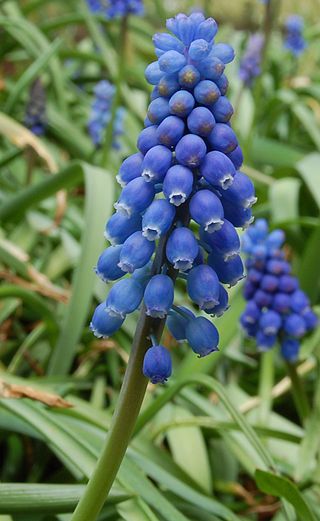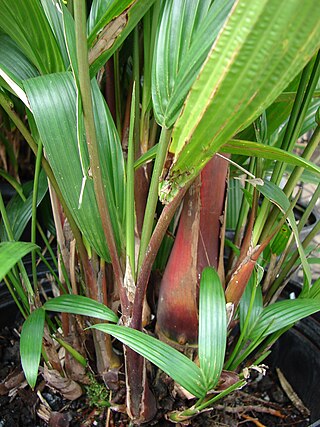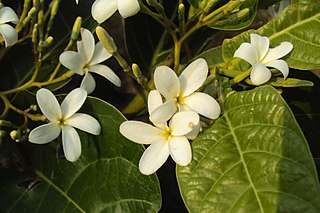
The Lamiaceae or Labiatae are a family of flowering plants commonly known as the mint, deadnettle or sage family. Many of the plants are aromatic in all parts and include widely used culinary herbs like basil, mint, rosemary, sage, savory, marjoram, oregano, hyssop, thyme, lavender, and perilla, as well as other medicinal herbs such as catnip, salvia, bee balm, wild dagga, and oriental motherwort. Some species are shrubs, trees, or, rarely, vines. Many members of the family are widely cultivated, not only for their aromatic qualities, but also their ease of cultivation, since they are readily propagated by stem cuttings. Besides those grown for their edible leaves, some are grown for decorative foliage. Others are grown for seed, such as Salvia hispanica (chia), or for their edible tubers, such as Plectranthus edulis, Plectranthus esculentus, Plectranthus rotundifolius, and Stachys affinis. Many are also grown ornamentally, notably coleus, Plectranthus, and many Salvia species and hybrids.

Hyacinthus is a small genus of bulbous, spring-blooming perennials. They are fragrant flowering plants in the family Asparagaceae, subfamily Scilloideae and are commonly called hyacinths. The genus is native to the area of the eastern Mediterranean from the south of Turkey to Israel/Palestine, although naturalized more widely.

Stachys is a genus of plants, one of the largest in the mint family Lamiaceae. Estimates of the number of species vary from about 300, to about 450. Stachys is in the subfamily Lamioideae and its type species is Stachys sylvatica. The precise extent of the genus and its relationship to other genera in the subfamily are poorly known.

Muscari is a genus of perennial bulbous plants native to Eurasia that produce spikes of dense, most commonly blue, urn-shaped flowers resembling bunches of grapes in the spring. The common name for the genus is grape hyacinth, but they should not be confused with hyacinths. A number of species of Muscari are used as ornamental garden plants.

Guzmania is a genus of over 120 species of flowering plants in the botanical family Bromeliaceae, subfamily Tillandsioideae. They are mainly stemless, evergreen, epiphytic perennials native to Florida, the West Indies, southern Mexico, Central America, and northern and western South America. They are found at altitudes of up to 3,500 m (11,483 ft) in the Andean rainforests.

Drakaea is a genus of 10 species in the plant family Orchidaceae commonly known as hammer orchids. All ten species only occur in the south-west of Western Australia. Hammer orchids are characterised by an insectoid labellum that is attached to a narrow, hinged stem, which holds it aloft. The stem can only hinge backwards, where the broadly winged column carries the pollen and stigma. Each species of hammer orchid is pollinated by a specific species of thynnid wasp. Thynnid wasps are unusual in that the female is flightless and mating occurs when the male carries a female away to a source of food. The labellum of the orchid resembles a female thynnid wasp in shape, colour and scent. Insect pollination involving sexual attraction is common in orchids but the interaction between the male thynnid wasp and the hammer orchid is unique in that it involves the insect trying to fly away with a part of the flower.

Aphyllanthes is a genus of flowering plants with only one species, Aphyllanthes monspeliensis, endemic to the western Mediterranean region. It is the only genus in the Aphyllanthoideae, a subfamily of the family Asparagaceae. Aphyllanthoideae was formerly treated as a separate family, Aphyllanthaceae.

Copernicia is a genus of palms native to South America and the Greater Antilles. Of the known species and nothospecies (hybrids), 22 of the 27 are endemic to Cuba. They are fan palms, with the leaves with a bare petiole terminating in a rounded fan of numerous leaflets. The species are small to medium-sized trees growing to 5–30 m tall, typically occurring close to streams and rivers in savanna habitats. The genus is named after the astronomer Nicolaus Copernicus. In some of the species, the leaves are coated with a thin layer of wax, known as carnauba wax.

Reinhardtia is a genus in the palm family native to the northern Neotropics. It is a primarily Central American genus with five species distributed between southern Mexico and the extreme north of Colombia, and one isolated species, Reinhardtia paiewonskiana in the southwest of the Dominican Republic.
Cyphosperma is a genus of flowering plants in the family Arecaceae, native to various islands of the Pacific. It contains the following species:

Cyrtostachys is a genus of flowering plant in the family Arecaceae. Its species are found in southeast Asia, New Guinea, and in some of the South-Central and Southwest Pacific island habitats of the Oceanian realm.

Hyospathe is a genus of flowering plant in the family Arecaceae, native to South America and Central America. It contains the following species:

Latania, commonly known as latan palm or latania palm, is a genus of flowering plant in the palm tree family, native to the Mascarene Islands in the western Indian Ocean.
Marojejya is a genus of flowering plant in the family Arecaceae. It contains the following two species, both endemic to Madagascar:
Masoala is a genus of flowering plant in the family Arecaceae. It contains the following species, both endemic to Madagascar:

Oncosperma is a genus of flowering plant in the family Arecaceae. It contains the following species, native to Southeast Asia and Sri Lanka:

Parajubaea is a genus of flowering plant in the family Arecaceae.
Clinosperma is a palm tree genus in the family Arecaceae.

The World Checklist of Selected Plant Families was an "international collaborative programme that provides the latest peer reviewed and published opinions on the accepted scientific names and synonyms of selected plant families." Maintained by the Royal Botanic Gardens, Kew, it was available online, allowing searches for the names of families, genera and species, as well as the ability to create checklists.

Holarrhena is a genus of plant in the family Apocynaceae first described as a genus in 1810. It is native to tropical and southern Africa as well as south, east, and southeast Asia. As of August 2013 the World Checklist of Selected Plant Families recognises 5 species:
















